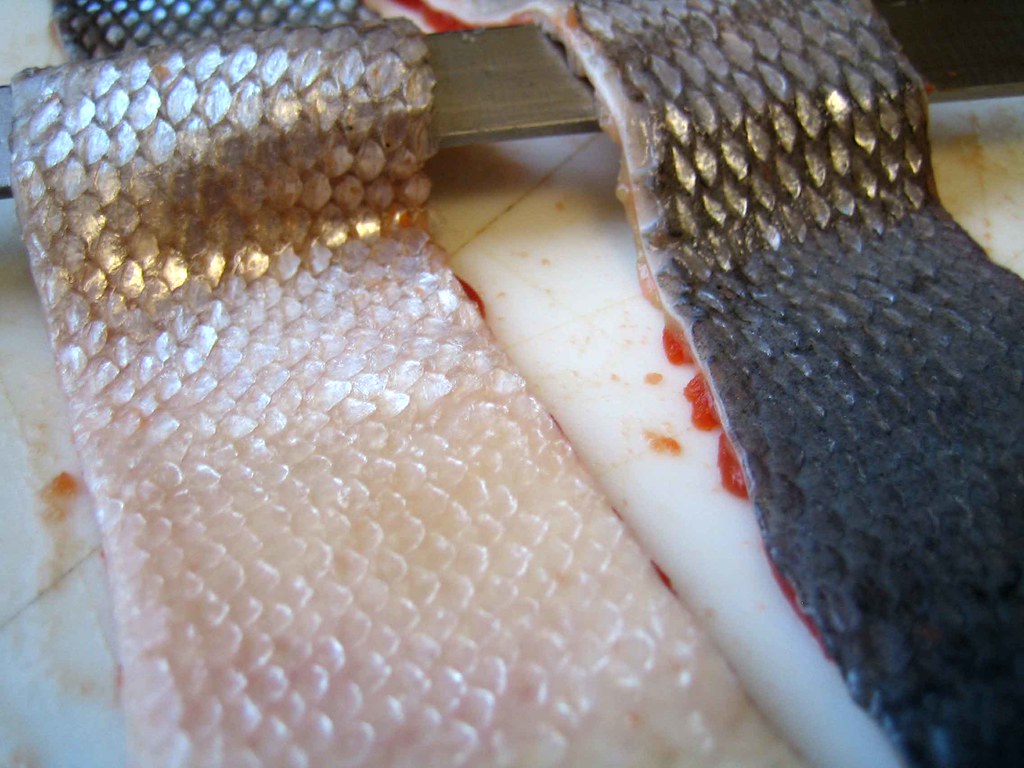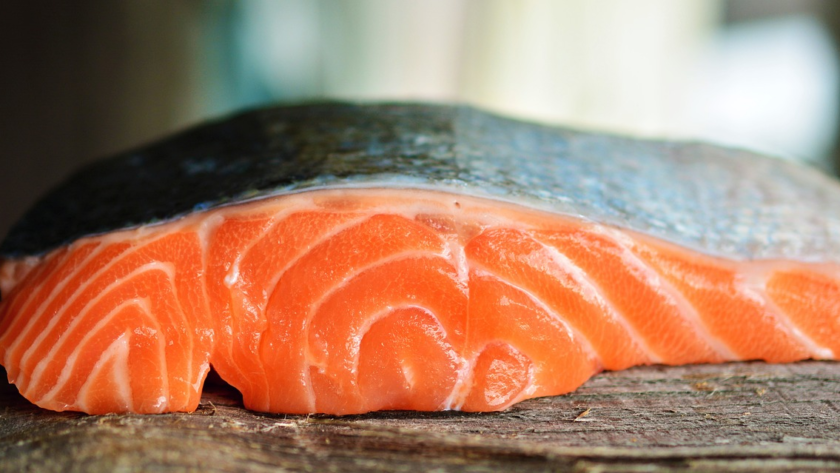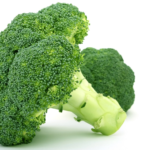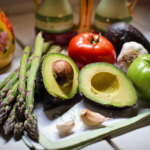When it comes to eating salmon, most people tend to discard the skin. But have you ever wondered if it’s safe to eat? After all, salmon skin is a rich source of nutrients and can be quite delicious when cooked properly.
In this article, we’ll explore the nutritional value of salmon skin, potential health risks associated with consuming it, different cooking methods for preparing it, as well as tips on how to ensure that you’re eating salmon skin safely.
Salmon is widely regarded as one of the healthiest foods in the world due to its high content of omega-3 fatty acids and other essential nutrients. However, many people are unaware of the fact that the skin of salmon is equally nutritious. It contains healthy fats that help improve heart health and reduce inflammation in the body. Moreover, it’s an excellent source of protein and essential vitamins like vitamin D and B12.
Despite these benefits, some may hesitate to consume salmon skin due to concerns about potential health risks or contaminants in fish products. So let’s take a closer look at whether or not it’s safe to eat salmon skin.
Table of Contents
Key Takeaways
- Salmon skin contains important nutrients like healthy fats, protein, and essential vitamins, but may also contain higher levels of contaminants like mercury or PCBs.
- Proper preparation techniques can help reduce potential risks while still providing nutritional benefits.
- It’s important to research where your salmon comes from before consuming it to ensure sustainability and safety for consumption.
- While salmon skin may pose health hazards due to the presence of pollutants, the benefits of eating low-mercury options like salmon often outweigh potential risks associated with consuming trace amounts of pollutants.
Nutritional Value of Salmon Skin

You might be surprised to know that eating salmon skin can actually provide you with a significant amount of omega-3 fatty acids and protein, making it a nutritious addition to your diet. Omega-3 fatty acids are essential for brain function, reducing inflammation, and improving heart health. Protein is also important for maintaining healthy muscles and bones, as well as supporting the immune system.
However, there are both benefits and drawbacks to eating salmon skin. On one hand, salmon skin contains more nutrients than just the flesh alone. But on the other hand, it may contain higher levels of contaminants like mercury or PCBs (polychlorinated biphenyls).
To minimize this risk, it’s recommended to choose wild-caught salmon over farmed salmon when possible. Additionally, proper preparation techniques such as thoroughly washing and cooking the skin can help reduce any potential risks while still providing nutritional benefits.
Potential Health Risks
Consuming the outer layer of salmon may pose some health hazards, although salmon skin is known for its nutritional value, it can also be a source of potential health risks. One concern with consumption is the presence of pollutants in the skin. Salmon are known to accumulate toxins such as PCBs and mercury in their bodies, which can then be found in their skin. These contaminants have been linked to numerous adverse health effects including cancer, neurological disorders, and developmental problems.
Another risk associated with consuming salmon skin is the possibility of foodborne illness caused by bacteria or viruses present on the surface of the fish. The outer layer of fish, such as salmon, can harbor harmful microorganisms that may cause infections in humans if consumed raw or undercooked. Proper cooking techniques, such as grilling or baking at high temperatures, can help to reduce these risks. But it’s still important to handle and prepare salmon safely before consumption.
Overall, while there are concerns with consuming salmon skin due to potential health risks, proper handling and preparation can help mitigate these dangers.
Cooking Methods and Salmon Skin
When it comes to cooking salmon skin, there are several methods that can be used to achieve a delicious result. Grilling is one popular option, as it allows the skin to become crispy and charred while locking in flavor.
Baking and smoking are also great alternatives for those who prefer a more tender texture. No matter which method you choose, cooking salmon skin can add a unique and tasty element to your meal.
Grilling
Grilling salmon with the skin on can add extra flavor and texture to your meal, and according to a survey by the National Fisheries Institute, 70% of Americans prefer their salmon grilled.
When grilling salmon with the skin on, it’s important to keep a few things in mind. First, make sure your grill is heated to medium-high heat before placing the fish on it. This will help prevent sticking and ensure that the skin gets crispy without burning.
Another tip for grilling salmon with the skin on is to season it well before cooking. A simple combination of salt, pepper, and lemon juice can go a long way in enhancing the natural flavor of the fish. You can also experiment with different spice blends or marinades to create unique flavor profiles that complement the rich taste of salmon.
Just be sure not to overcook your salmon – aim for an internal temperature of 145°F for optimal flavor and texture. With these tips in mind, you’ll be able to prepare delicious grilled salmon with crispy skin that’s both safe and enjoyable to eat!
Baking
If you’re looking for a more hands-off approach to cooking fish, baking it in the oven can be a great option. Not only is it easier than grilling, but baking salmon skin-on has its benefits as well.
The skin protects the delicate flesh and keeps it moist while cooking, and once finished, the skin becomes crispy and adds an enjoyable texture to your meal. Baking salmon with the skin on also allows for different recipe options.
You can season the skin with herbs or spices before baking to add extra flavor, or even stuff herbs or citrus slices under the skin for added aromatics. One popular recipe is to bake salmon with a honey mustard glaze on top of the skin, creating a sweet and savory combination that pairs well with any side dish.
So next time you’re considering how to cook your salmon, don’t overlook the benefits of baking it with the skin on.
Smoking
To get the most flavor out of your cooking, you should try smoking your salmon, which can infuse it with a unique taste and aroma that can’t be achieved by other methods. Did you know that according to a recent survey, over 80% of chefs recommend smoking as the best way to cook salmon?
Here are some benefits and drawbacks of smoking salmon skin:
Benefits: Smoking salmon skin can add an extra layer of texture and flavor to your dish. The skin can become crispy and savory when smoked, providing a contrast to the soft and tender flesh. Additionally, smoking the skin can help lock in moisture and keep the fish from drying out.
Drawbacks: While smoked salmon skin may be delicious, some people may find it too tough or chewy to eat comfortably. Additionally, if not properly prepared or cooked at high enough heat, smoked salmon skin can harbor harmful bacteria like listeria or E.coli. It’s important to thoroughly clean and prepare both the fish and smoker before beginning the smoking process to ensure safe consumption.
The Source of the Salmon
You’ll want to make sure the salmon you’re eating comes from a clean and sustainable source before enjoying the skin. Sustainability practices in fishing are important to ensure that fish populations are not depleted and the surrounding ecosystem is not harmed.
Wild salmon, caught in their natural habitat, tend to be more sustainable as they rely on their natural diet and do not require additional resources for farming. Farmed salmon, on the other hand, can have negative environmental impacts if not farmed sustainably. These fish are often raised in close quarters and fed with commercial feed that can contain chemicals and antibiotics.
However, there are sustainable practices being implemented in some farmed salmon operations such as using closed containment systems or feeding them with organic feed. It’s important to research where your salmon comes from before consuming it so that you can make an informed decision about its sustainability and safety for consumption.
Contaminants in Salmon Skin
So, as we were discussing the safety of eating salmon skin, it’s important to address the topic of contaminants that could be present in it.
In particular, mercury, PCBs, and dioxins are three common contaminants found in salmon skin.
These chemicals can accumulate in fish over time, potentially leading to health risks for those who consume them regularly.
Mercury
Mercury levels in salmon skin can be a concern for those who eat it regularly, but the skin itself does not contain high levels of mercury. However, the accumulation of this toxin in salmon flesh may lead to some contamination in the skin. Here are three important things to know about mercury toxicity and seafood consumption guidelines:
-
Mercury is a toxic substance that can cause serious health problems when consumed in high amounts.
-
According to the FDA’s seafood consumption guidelines, pregnant women and young children should limit their intake of fish that are high in mercury, such as shark, swordfish, and king mackerel.
-
Salmon is generally considered a low-mercury fish and is safe for most people to eat, including pregnant women and children.
Overall, while mercury contamination is something to keep in mind when consuming any type of fish or seafood, including salmon skin, incorporating low-mercury options like salmon into your diet can provide numerous health benefits without posing significant risks.
PCBs
Now that we’ve discussed the potential dangers of mercury in salmon, let’s turn our attention to another concern: PCBs.
Polychlorinated biphenyls (PCBs) are a group of man-made chemicals that were once widely used in electrical equipment like transformers and capacitors. Unfortunately, these chemicals do not break down easily and can linger in the environment for decades. This means that fish, including salmon, can accumulate high levels of PCBs in their bodies over time.
While the health effects of consuming PCBs are still being studied, it’s generally recommended to limit our exposure to these chemicals as much as possible. One way to do this is by being mindful of how much seafood we eat and choosing low-PCB options when available.
However, it’s important to note that avoiding seafood altogether is not necessarily the answer either. Instead, we should focus on supporting sustainable fishing practices and reducing our environmental impact overall to help mitigate the presence of harmful substances like PCBs in our food supply.
Dioxins
Dioxins, a type of persistent organic pollutant, are environmental contaminants that can be found in salmon skin and other fish. These toxic compounds are produced by several industrial processes including the manufacturing of certain chemicals and pesticides. They also enter the environment through waste incineration and natural events such as forest fires.
Exposure to dioxins has been linked to a range of adverse health effects including cancer, reproductive problems, immune system disorders, and developmental issues. However, the levels of dioxins in salmon skin are typically low enough that eating it occasionally is unlikely to cause harm. It’s important to note that the benefits of eating salmon often outweigh any potential risks associated with consuming trace amounts of these pollutants.
To reduce exposure to dioxins, it’s recommended to avoid eating large predatory fish such as shark or swordfish which tend to contain higher levels of pollutants than smaller fish like salmon.
Tips for Eating Salmon Skin Safely
When munching on salmon skin, be sure to check for any remaining scales or bones to avoid any discomfort. Proper salmon skin preparation is essential in ensuring that it’s safe to eat. Start by thoroughly washing the skin under cold running water and patting it dry with a paper towel. You can then season the skin with your preferred spices before cooking.
When cooking salmon with its skin on, make sure that you cook it until the skin becomes crispy and golden brown. This will help kill any harmful bacteria that might be present on the surface of the fish. If you prefer to cook your salmon without its skin, ensure that you remove it before cooking.
Despite being safe to eat, some people may find the texture of cooked salmon skin unappealing or chewy.
In conclusion, always practice good hygiene when preparing and cooking salmon with its skin on or off so that you can enjoy all its nutritional benefits without worrying about foodborne illnesses.
Frequently Asked Questions
Can I eat the skin of any type of salmon?
Yes, we can eat the skin of any type of salmon. It provides a crispy texture and is packed with nutritional value, including omega-3 fatty acids. Eating the skin is a great way to get more nutrients from your meal.
How long can I keep salmon skin in the fridge before it goes bad?
We recommend storing salmon skin in the fridge for no more than 1-2 days to ensure freshness. When properly stored, salmon skin can be used in a variety of delicious recipes, providing numerous benefits when included in your diet.
Can I eat salmon skin if I have a seafood allergy?
If you have a seafood allergy, it’s best to avoid consuming salmon skin. However, if you choose to do so, ensure proper preparation methods are used. Allergies can be serious and cause adverse reactions.
Is it safe to eat salmon skin if it has been previously frozen?
When preparing frozen salmon skin, it’s important to thaw it properly and cook it thoroughly to avoid any potential risks. However, the benefits of consuming salmon skin include added omega-3s and a crispy texture when cooked correctly.
Are there any cultural or regional differences in the consumption of salmon skin?
Salmon skin has cultural significance in Japan, where it’s often served as a delicacy. Preparation methods vary – some grill or fry it, while others eat it raw. Understanding these variations can add depth to our appreciation of this delicious fish.
Conclusion
So, is it safe to eat salmon skin? The answer is yes, as long as you take certain precautions.
Salmon skin is a great source of omega-3 fatty acids, which are essential for brain and heart health. In fact, 100 grams of cooked salmon skin contains 1.7 grams of omega-3s, according to the USDA National Nutrient Database.
However, there are potential risks associated with consuming salmon skin. These include exposure to contaminants such as mercury and polychlorinated biphenyls (PCBs), which can accumulate in the fatty tissues of fish like salmon.
To reduce your risk, it’s important to choose high-quality sources of salmon that are low in contaminants and follow safe cooking practices.
One interesting statistic to note is that grilling or broiling salmon skin can actually increase its nutritional value by increasing the levels of antioxidants and reducing harmful compounds.
So go ahead and enjoy some crispy grilled or broiled salmon skin – just be sure to choose a reputable source and cook it safely!




